People either love or hate Paphiopedilums. Often called by their common names of slipper orchid or lady’s-slipper orchid, Paphiopedilums are certainly distinctive, with their prominent pouch-like lips, which do resemble old-fashioned shoes, and glossy flowers. If you’re in the love group, you’ll appreciate their distinctive colorations and delicate flowers that also last long as cut flowers. If you’re not a fan, it will probably just confirm your suspicions when you learn that the pouch is the flower’s way of capturing pollen-bearing insects.
As houseplants, Paphiopedilums have a lot of pluses. They bloom for up to two months, generally in winter; are happy in slightly shadier locations indoors; and are low growing, meaning they won’t overpower your other houseplants.
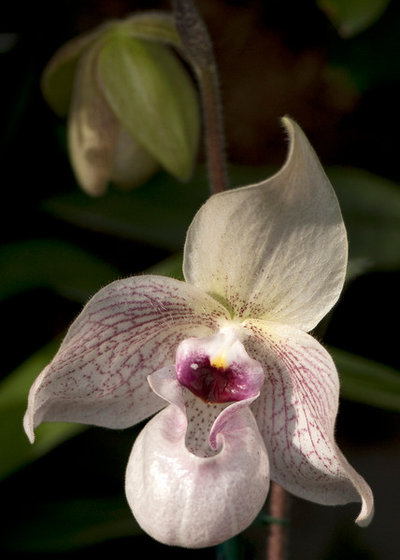
The New York Botanical Garden
Slipper orchids are comfortable in most homes. Most are happy with daytime temperatures of 70 to 80 degrees Fahrenheit (21 to 27 degrees Celsius) during the day and about 20 degrees Fahrenheit (11 degrees Celsius) lower at night; those with variegated foliage prefer it slightly warmer. They can take temperatures up to 90 degrees Fahrenheit (32 degrees Celsius), but you’ll need to compensate for that heat with a higher humidity level.
These are considered low-light orchids, which means an east-facing location out of direct sun is ideal. You can also grow them in south- or west-facing windows with light shades. Keep them out of the strong sun at all times.
Along with the right light, provide plenty of air circulation. Breezes from open windows are fine in summer; in winter or if you’re using air conditioning, you may need to run a small fan.
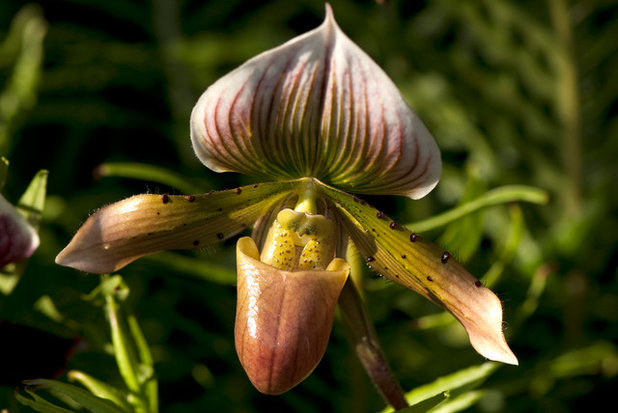
The New York Botanical Garden
Water and humidity play a slightly larger role for these orchids than for some of their brethren. Paphiopedilums should never dry out completely, but at the same time they should not have overly wet roots. Aim for consistent moisture, and check by sticking your finger about an inch into the potting medium.
Generally, water about once a week with room-temperature water and let the water drain out completely. Morning is the best time to do this so the leaves will have time to dry. These orchids can handle hard water, but soft water or water with heavy chemicals will kill them.
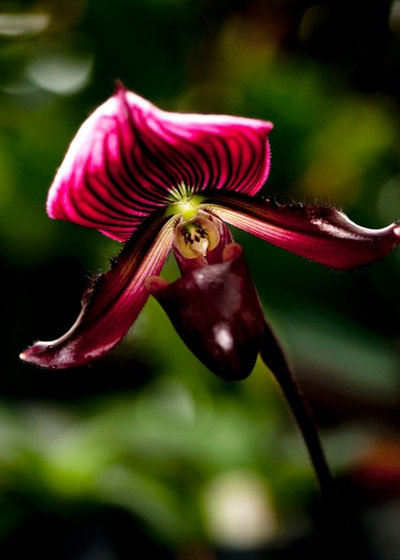
The New York Botanical Garden
Slipper orchids also prefer a higher humidity. Placing their containers on trays filled with pebbles and water, above the waterline, can help increase the humidity, as can growing numerous plants together. You can also mist them. Mist in the morning, so the leaves will have time to dry out during the day.
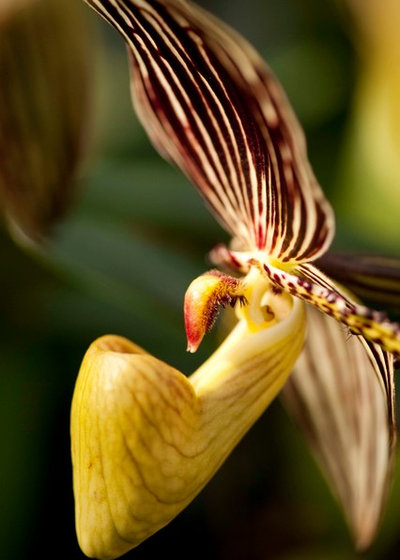
The New York Botanical Garden
Feed with a liquid orchid fertilizer at about a quarter strength, or the same percentage of a balanced fertilizer, once a week from spring to summer and every other week in winter. If you’re growing these exclusively in fir bark, you may want to up the fertilizer balance to about 30-10-10 during the summer.
You’ll probably need to repot every year or so as the potting medium deteriorates. Do this just after they finish blooming, and don’t go too large on pot size — they do best when their roots are somewhat crowded. Use a very porous orchid mix or fir bark; Paphiopedilums need air circulation around their roots as well as around their leaves and flowers. Water lightly until you see new growth, then give the plant regular care.
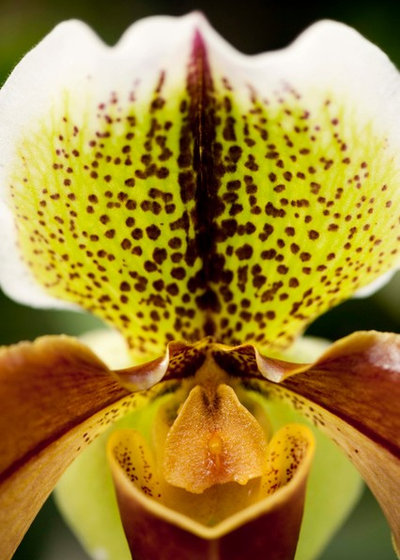
The New York Botanical Garden
Paphiopedilums will rebloom if you follow some basic guidelines. Some will produce multiple flowers on a single flower stock during the blooming season; others will have only a single bloom. Wait until the flower stalk has faded and started to turn brown, then cut it back to leaf level. Provide general care and the plant should rebloom the next year. If it seems reluctant to do so, provide a bit more light and more of a temperature drop during the nights.
More Orchids 101: Get Started Growing Orchids at Home
How to Keep Your Moth Orchids Alive and Blooming





